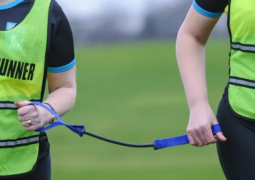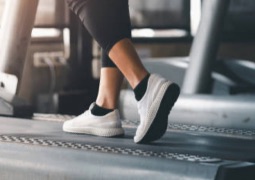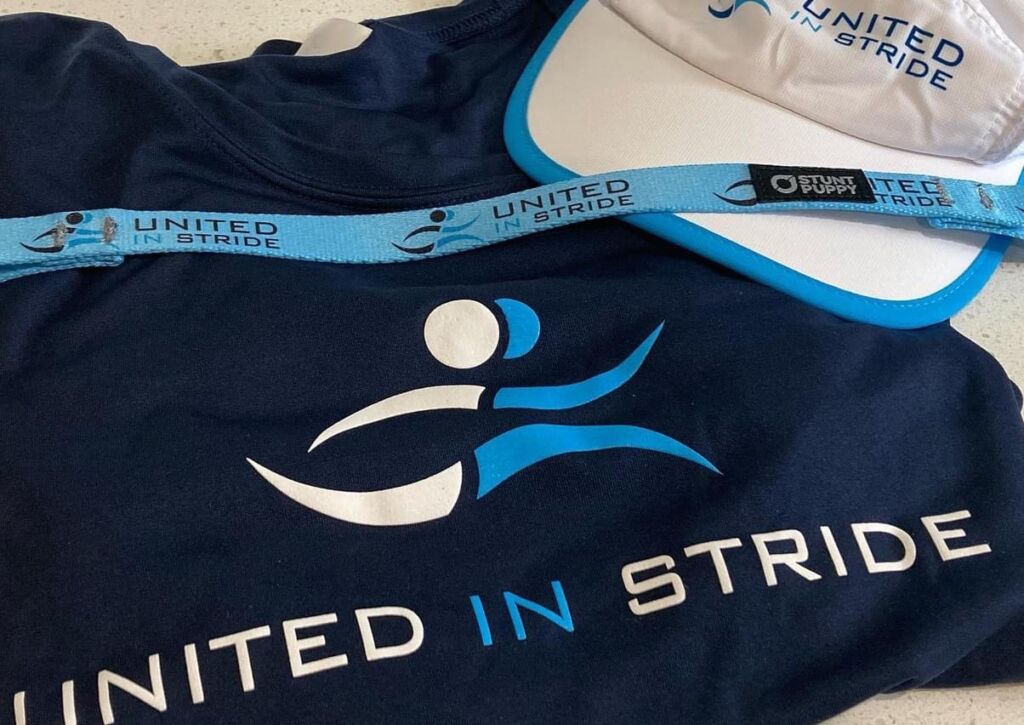Benefits of adding a visually impaired division to your race:
- Highlights the abilities of those with vision loss.
- Inspires other race participants, spectators, and community members.
- Increases the likelihood of attracting other runners who are visually impaired to register for your race, and makes your race more inclusive and welcoming to those with disabilities.
- Provides a race for runners who are visually impaired to run in their own community.
- Informs race organizers that there are runners who are visually impaired taking part in the race for planning purposes.
- Creates new opportunities for volunteerism and community collaboration.
What is involved in adding a visually impaired division to your race?
- Adding a question during the registration process which allows someone to register for the Visually Impaired Division. This could be a simple drop-down menu or check box.
- Offer awards to both male and female winners of the VI Division.
- Create a process by which a visually impaired registrant can submit verification of legal blindness.
- Ensure there is a process for sighted guides to register. See below for more information about sighted guides.
- Decide if runners who are Visually Impaired will start with the general field or if you will offer an early start. A two to five-minute early start is common.
How are Sighted Guides managed at races?
- Sighted guides should NOT be charged a race fee to guide a runner who is visually impaired. The guide is there to serve as “the eyes” to the visually impaired runner.
- The number of guides allowed varies at races depending upon the course and safety considerations. Race organizers should allow a runner who is visually impaired to run with a relay of 2 to 4 sighted guides for the marathon distance. Most runners who are visually impaired run with one guide at a time, but there is a growing movement for runners who are visually impaired to run with 2 guides at one time to minimize issues when one sighted guide is unable to continue.
- Race organizers will need to decide how they want to register guides to ensure they sign your normal race day liability waiver. This could be done online or using a print version. A print version can be signed in advance or race day.
- It is NOT the race’s responsibility to find sighted guides for the runner who is visually impaired. We do encourage race organizers to share United in Stride (www.unitedinstride.com) with runners who ask about how to get involved in guiding or runners who need help finding a sighted guide.
- Provide 2 pin-on bibs that say, “Guide” for each sighted guide. These should be worn on the front and back.
- Unless officially registered and completing the entire race, guides should not receive official times. The time is the VI runner’s time.
Who qualifies to be in the visually impaired division?
For purposes of a Visually Impaired Division, the basic standard is legal blindness.
Visual acuity of 20/200 or worse or a visual field of less than 20 degrees in the better eye with the best practical eye correction. Both eyes must meet this standard. While Paralympics sports have definitions that define classifications that range from legal blindness to total blindness, it is not feasible for most races to offer awards and recognition for all visually impaired categories.
Athletes who register for the Visually Impaired Division should be required to provide the race organizer with a letter certifying that they are at least “legally blind.” This could be a letter from a doctor or rehabilitation specialist.
It’s not unusual for people to think they are visually impaired when they see this category offered during registration. While they may have a vision impairment, they would not necessarily meet the criteria for legal blindness. Even if someone is totally blind in one eye, if their other eye does not meet the criteria for legal blindness as well, they would not qualify.
Visual Classifications
B1/T11: Possessing no light perception in either eye up to light perception, but inability to recognize the shape of a hand at any distance or in any direction.
B2/T12: From ability to recognize the shape of a hand up to visual acuity of 20/600 and/or a visual field of less than five degrees in the better eye with the best practical eye correction.
B3/T13: From visual acuity above 20/600 and up to visual acuity of 20/200 and/or a visual field of less than 20 degrees and more than five degrees in the better eye with the best practical eye correction.
Additional best practices ideas to enhance your visually impaired division:
- Adding an optional “early start” to your race will reduce the anxiety of both runners who are visually impaired and sighted guides at the beginning of the race when it is most crowded.
- Before the race start, have your race MC highlight the fact that there are runners who are visually impaired on the course. It serves to educate the community about the abilities of those with vision loss.
- Offer a complimentary entry to runners who are visually impaired who possess a current “Visually Impaired Elite Marathon Standard” certificate. This certificate is certified by USOC and the US Association of Blind Athletes. Visually Impaired runners who earn this certificate had to submit special medical diagnostic information about their vision and would have completed a previous marathon in the past 2-years in under 3:00 for men and 3:25 for women.
- Consider allowing runners who are visually impaired and their guides to have access to a VIP tent at the start.





